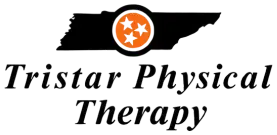Discover the Best Elderly Care Techniques for Occupational Therapy!
Occupational therapy is a specialized field that helps people of all ages to perform necessary tasks in their daily lives, even if they have physical, emotional, or mental limitations. When it comes to elderly care, occupational therapy can be a game-changer. Some of the best techniques for elderly care in occupational therapy include the use of adaptive equipment, strengthening exercises, and cognitive training.
Adaptive equipment can be used to make daily tasks easier for elderly clients by modifying their environment to better suit their needs. For example, a raised toilet seat can make it easier for someone with limited mobility to get up and down from the toilet. Strengthening exercises can help elderly clients maintain muscle mass and improve their balance, which can reduce their risk of falls. Cognitive training can help elderly clients maintain their mental sharpness and stay engaged in life.
Enhance Your ADL Training: Tips and Tricks for Working with Elderly!
ADLs are the basic tasks that we all need to do in order to take care of ourselves, such as bathing, dressing, and grooming. Elderly clients may struggle with these tasks due to physical limitations, cognitive decline, or other factors. Occupational therapists can help them overcome these challenges by using special techniques for ADL training.
One of the most important tips for working with elderly clients is to be patient and empathetic. Elderly clients may take longer to perform tasks than younger clients, and they may need extra encouragement and support. Another important tip is to break down complex tasks into smaller, more manageable steps. For example, instead of asking an elderly client to get dressed, an occupational therapist might ask them to put on their shirt first, followed by their pants and shoes.
Occupational therapists can also use visual aids, such as picture cards or diagrams, to help elderly clients understand and remember how to perform ADLs. Another helpful technique is to use positive reinforcement, such as praise or rewards, to encourage clients to keep trying and to celebrate their successes. With these special techniques for ADL training, occupational therapists can help elderly clients maintain their independence and improve their quality of life.
In conclusion, elderly care in occupational therapy requires a unique set of skills and techniques. By using adaptive equipment, strengthening exercises, cognitive training, and special techniques for ADL training, occupational therapists can help elderly clients overcome their limitations and maintain their independence. With patience, empathy, and creativity, occupational therapists can make a real difference in the lives of their elderly clients.

